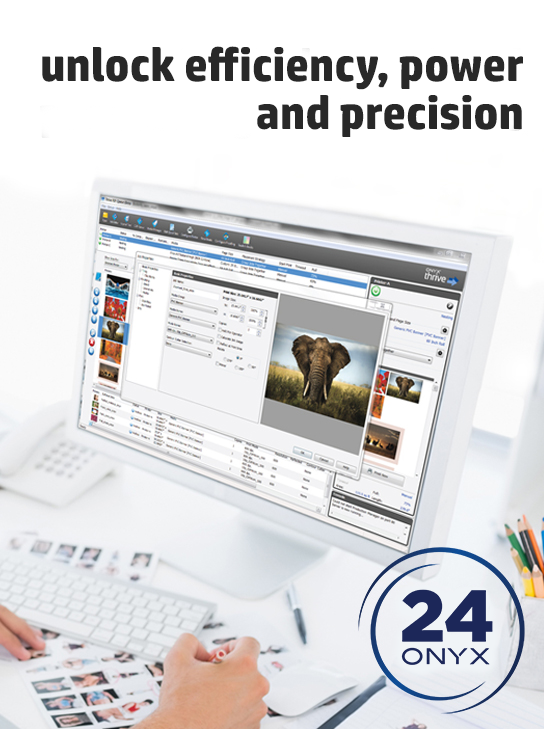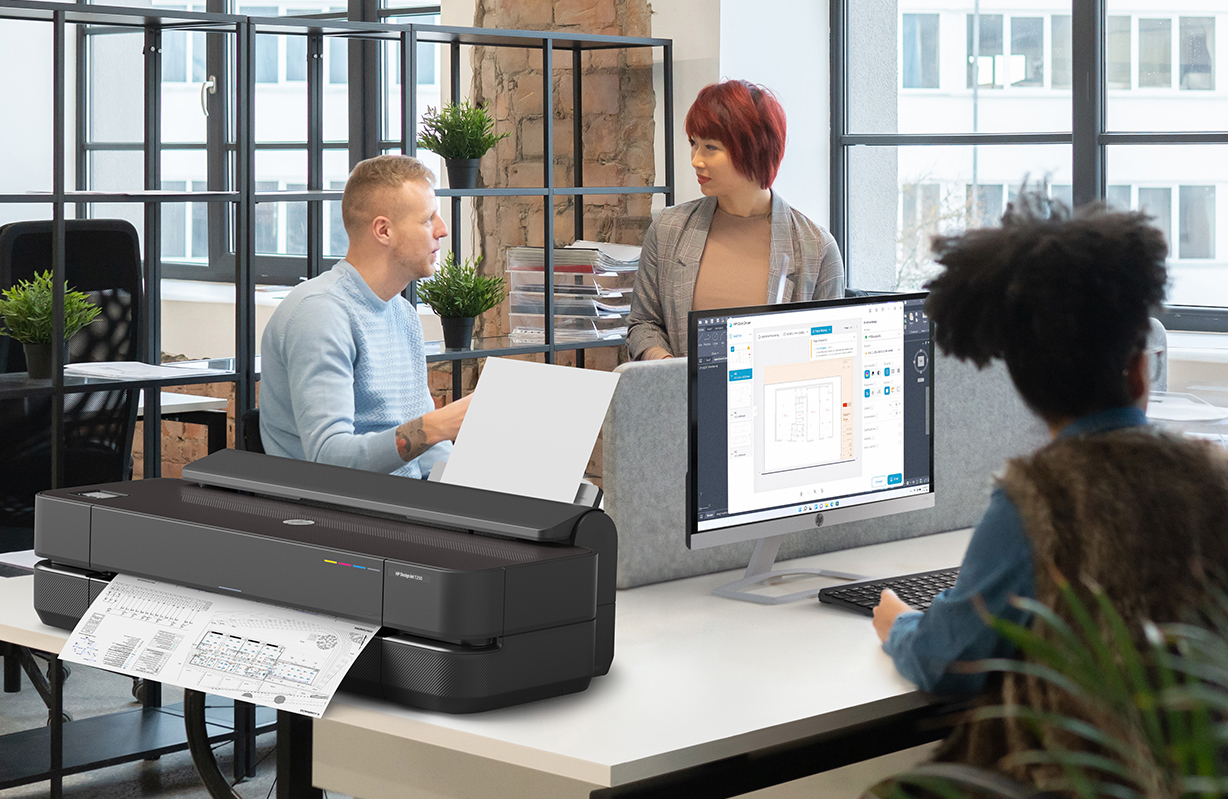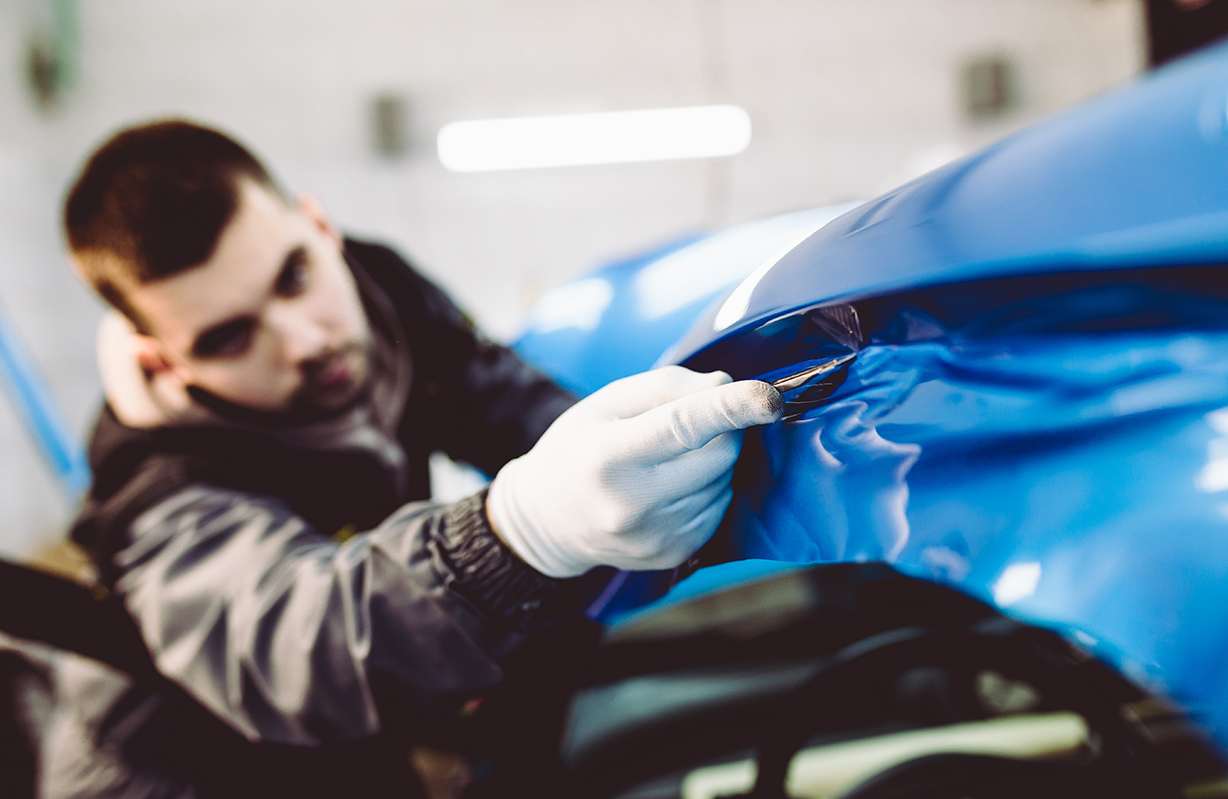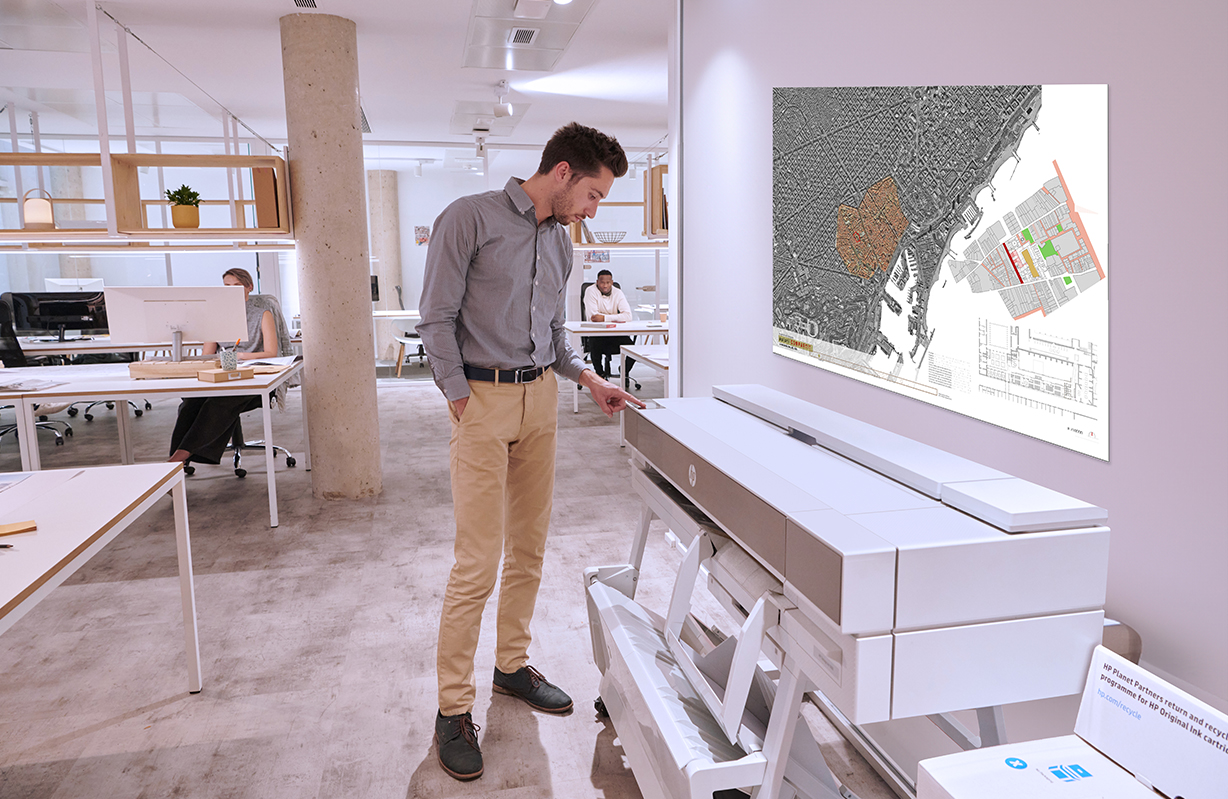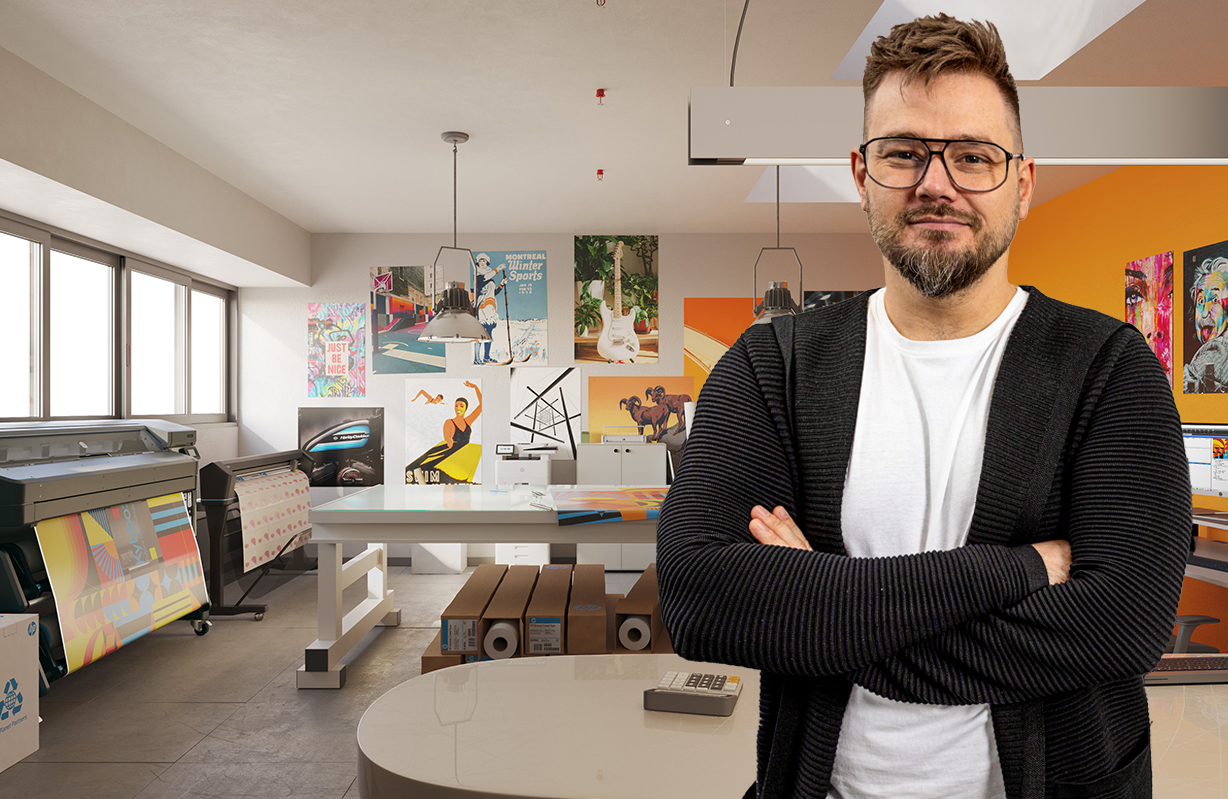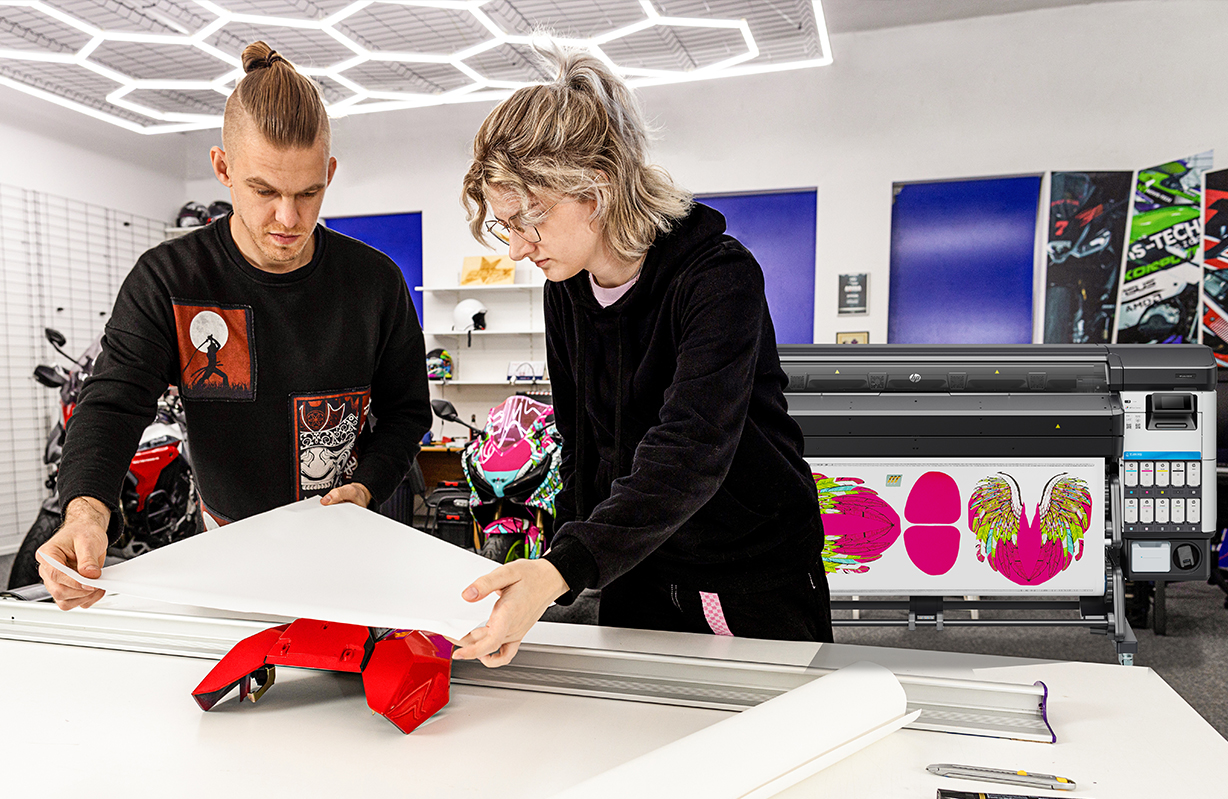-
Read more ...
Despite its size, the construction industry has long faced a productivity problem. In 2023, $13 trillion was devoted to construction projects globally, according to McKinsey. By 2040, the industry is predicted to grow by 70%. However, engineers and contractors are already struggling to meet today's project demands
The labour market is fiercely competitive, with shortages in essential roles like engineering and project management. Workforce shortages, retirements, shorter job cycles, and competition for talent have led to a decline in skills and experience. Consequently, construction productivity rose by only 10% between 2000 and 2022, compared to a 50% productivity improvement of the total economy, based on research from McKinsey.
Despite investments in digitalisation, manual processes still dominate workflows, risking human error and creating information siloes. Digitising the construction workflow end-to-end is essential for dramatically reducing the efficiency gap, which could create an estimated $1.6 trillion in additional value and meet half the world’s infrastructure needs.
Introducing HP Build Workspace
Launching today at HP Imagine, HP’s annual product innovation event, HP Build Workspace is a new mobile cloud collaboration platform that brings together all the essential stakeholders on complex building projects, such as urban planning, including architects, designers, contractors, and city planners. By simplifying complexity, improving communication and automating manual processes between the office and field sites, HP Build Workspace reduces construction project lead times from three days to as little as 20 minutes, depending on design complexity.
With seamless integration between digital and physical workflows, the HP Build Workspace platform also features HP Print AI capabilities and enables AEC professionals to:
- Effortlessly capture and organise site observations
- Vectorise their technical designs using AI
- Share floor plans
- Enable real-time feedback
- Automate field reports
Connecting Construction Site Layouts with HP SitePrint 3.0
In July 2024, ACCIONA delivered the design layout for the Alentejo Central Hospital 6x faster than manual methods and over 25,000 sqm of partition walls thanks to HP SitePrint. This is an example of how our connected technologies can significantly boost productivity in complex construction projects. We believe our innovations have the power to address the construction industry's productivity challenges, and our customers are already demonstrating what's possible.
HP Build Workspace combines three key innovations for an integrated, digitized and efficient construction solution:
- HP SitePrint, a robotic solution that prints complex construction site layouts with pinpoint accuracy, increasing productivity up to 10x compared to manual layout techniques (1).
- The print point of the HP SitePrint 3.0 is now up to 30% faster, offering boosted navigation speed and improved robotic capabilities to level up efficiencies in onsite operations (2).
- Additionally, we are working with large HP SitePrint customers on a Proof-of-Concept to check surface flatness, which will be available as a subscription service in selected markets by 2025.
Simplifying Your Printing Experience
The DesignJet T200/T600 Printer series 2025 edition is our most sustainable, intuitive, and optimised large-format printer yet, offering reduced energy consumption and minimising plastic waste by more than 50% with new molded fiber packaging (3). AEC professionals can print digital plans on paper with ease using HP Click Driver for real-print previews from any Windows 11 application. Already in beta in the US and Europe, we intend to scale these AI capabilities to the UK & Ireland soon and roll out worldwide starting next year.
More information on HP Build Workspace and our suite of digital construction tools can be found here.
About HP
HP Inc. (NYSE: HPQ) is a global technology leader and creator of solutions that enable people to bring their ideas to life and connect to the things that matter most. Operating in more than 170 countries, HP delivers a wide range of innovative and sustainable devices, services and subscriptions for personal computing, printing, 3D printing, hybrid work, gaming, and more. For more information, please visit: http://www.hp.com.
1. Based on data from HP SitePrint customers – comparing HP SitePrint’s performance to manual layout techniques used for the same job, including the customer’s estimation (time/resource) for manual layout based on experience working on similar projects. HP’s data typically finds manual layout methods average between 25m2 and 35m2 covered per hour, with a crew of two people. HP SitePrint’s performance averages between 180m2 and 300m2, with one operator. Exact improvement results will vary from project to project and can be influenced by multiple factors, such as the line density or the dimensions of the site.
2. Productivity improvements of up to 30 percent are in comparison to the performance of the previous software version, VP2.0. These results were obtained from conducting internal tests, where SitePrint printed CAD files with average conditions, including element density per area and printed linear density per area, representative of real user plots across various applications. Actual productivity gains may vary depending on specific customer applications and the unique characteristics of each job.
3. The HP DesignJet T200/T600 Printer series 2025 Edition plotter series use EPS-free packaging with molded pulp cushions made from recycled fiber-based material. The plastic reduction is expressed as a percentage of the total packaging plastic weight. The reduction varies depending on the printer model, with at least a 53% reduction in the new 36-inch model and at least a 72% reduction in the new 24-inch model, compared to the previous T200/T600 models.
-
Read more ...
Diversifying into vehicle wrapping can be a lucrative decision for growing print businesses, no matter where you’re at in your large format journey. Recent advances in print technology have made wrapping easier than ever before. With durable water-based inks, intelligent media and, more precise large-format printers all available, there’s never been a better time to get involved.
Market growth
Vehicle wrapping is seeing an especially sharp rise, with the automotive wrap film market expected to grow 22.4% from 2021 to 2028. 1 The broader signage industry also remains resilient, as it’s a cost-effective solution for almost any business sector. This is all thanks to wider growth in the online and delivery sectors: E-Commerce is expected to grow by 16% in 2022, 2 and this means more demand for branded vehicles on the road. With 69% of customers finding out-of-home advertising more trustworthy than digital advertising, 3 it’s time to take advantage of these new opportunities and get results.
To get you up to speed with the basics including materials, technologies, and practical applications we’ve pulled together some of the most useful hints and tips into our short, handy guide.
Tip 1: Select the right media for the job
We’re going to focus on wrapping films in this section, as it’s a durable solution for vehicle wraps, but these principles apply to all media types. Cast vinyls are likely your go-to substrate for car wraps: they’re easy to contour, stretch, and cut, but this flexibility comes at a higher cost. If you’re printing to flatter signage surfaces and want to save some money, calendared vinyl is the way to go.
When there are so many options, you need a versatile print solution that can keep up. HP Latex is fully compatible with substrates from leading brands such as 3M and Avery Dennison. With HP, you can find a solution that fits your application needs and current equipment. These can all be found on HP Media Solutions Locator, giving you access to perfect media for your printer or application. Don’t forget to consider warranties for peace of mind. HP Latex printers are eligible for six year 3M MCS and Avery ICS warranties4 for vehicle graphics–helping you print with confidence.
Tip 2: Measure and measure again
A top tip for ensuring a successful sign or vehicle wrap, is ensuring that you have the measurements, images, and specifics of the surface, item, building, or vehicle you are designing for. For vehicles, especially for full wraps, you’ll need the latest vehicle templates, which you can find online. This will ensure your design fits properly, without distortion or slicing the image into pieces.
Tip 3: Design with the end-installation in mind
Less is sometimes more. The human eye can take in seven items at a time, so when designing it’s important not to try and pack in too much information.5 Equally, colour and font can help get your message across–but don’t use too many.
For signage, perspective and distance is key. Choose your lettering size carefully to optimise visibility according to the reading distance. As a rule of thumb, for every 3 meters of viewing distance away from your sign, you should increase the letter height by 2.5 centimeters. 6 HP Latex helps you print sharp images and text for easier eligibility. With a resolution of up to 1,200 DPI, 7 you can print clear text all the way down to 4-point font sizes.
Tip 4: Choose white ink–for prints that pop!
Printing with white ink can drive up your gross margins by up to 30% by adding depth and vibrance to your images–especially on transparent and coloured substrates.8 It can also make previously challenging (or even impossible) projects easier, saving time on additional processes and materials.
HP Latex White Ink gives you all the benefits of white without the complexity. HP Latex printers with white ink, such as the HP Latex 700W, 800W, or HP Latex R-series, feature automatic recirculation to prevent clogging. Additionally, they’re built with an offline rotation chamber for white printhead storage, to minimise waste between white ink jobs.
Tip 5: Select the right print profile
Let’s say you have the design ready, and you’ve chosen the ideal material for the task. Next, it’s important to deliver a sharp, high-quality image for your sign or vehicle wrap. HP offers a wide range of tested, approved and certified ICC print profiles for HP Latex printers. These profiles give your machine specific instructions on how much ink to lay down for the optimum result. This ensures images are not subject to colour shifts, over-saturation, insufficient ink coverage, edge curling or, drying problems.
A lot of print shops don’t follow this important step and use one generic profile for all their media, resulting in images that appear dull or just not quite right. So, by making sure to select the right print profile, you’ll definitely win on quality.
Since you’ll most likely laminate your vehicle wrapping prints, remember to disable the overcoat when selecting your profile.
Don’t forget–the latest generation of HP Latex also gives you a 10% higher colour gamut, giving you vibrant and accurate colors on any substrate.9Tip 6: Move into lamination
As your vinyl or film will be exposed to the elements, you need to select one that’s suitable for lamination to prevent scratches or water from dislodging it from the surface.
Tip 7: Eliminate the need to de-gas
By choosing HP Latex technology, you can remove the need to de-gas your vinyl prints before you install them. HP Latex prints are dry straight from the printer, ready to be laminated or installed immediately after leaving the print tray. This cuts out an entire step from your vinyl printing workflow, saving you time, and freeing up your resources for other tasks. A great way to boost your productivity and improve your bottom line.
Tip 8: Start your installation squeaky clean
The most time-consuming part of most signage or vehicle wrap installations is the preparation stage. For new signage installations, this may involve removing old graphics and adhesive, then washing with water and detergent to ensure a grease-free dry surface. When preparing for a vehicle wrap it’s essential to clean every inch of the surface as well as under trims and cracks to make sure they are 100% dirt-free. You should use a suitable solution to remove any wax, before wiping the vehicle with alcohol to remove any residue. All cleaning must be completed the day before to ensure the vehicle is completely dry before installation. Understandably this is often the least preferred part of wrapping a car and is sometimes neglected, but this is at the peril of long-term wrap durability as the slightest dirt left behind could result in the vinyl’s adhesive failing. So, to be sure of success, make sure your vehicle is always squeaky clean.
Tip 9: Apply graphics with ease
The installation of a car wrap undoubtedly requires skill and practice. But the real key to success is post-heating. After the wrap is installed, you should apply a heat gun to the vinyl at 85-95 degrees Celsius, especially where there are deep recesses or contours. This will ensure that the vinyl will retain its memory and remove the risk of it ‘popping’ out.
If you are wrapping in colder weather, keep the car inside until the next day. This will allow the vehicle and vinyl to cool down gradually to minimize the risk of lifting.
With the HP Latex 700 and 800 printers, you can achieve 30% better adhesion to laminate, 10 making it easier than ever to get smooth, long-lasting fits. What’s more, HP Latex Inks are very flexible. Discover ink elongations up to 30% without losing quality.11What are you waiting for?
Signage and car wrapping undoubtedly offer a range of exciting possibilities for entrepreneurial print businesses to explore. There are certainly some tricks of the trade to learn upfront, but once proficient, you’ll be able to offer a wide portfolio of services that will ensure your customers will never need to go elsewhere.
Remember, you’re not alone on the journey. Printer manufacturers and media vendors are always on hand to help, and you’ll find online tutorials and videos to help with any questions along the way.Footnotes
1. Grand View Research, Automotive Wrap Films Market Size Report 2021-2028, https://www.grandviewresearch.com/industry-analysis/automotive-wrap-film-market
2. Insider Intelligence, Ecommerce Industry Statistics, https://www.insiderintelligence.com/insights/ecommerce-industry-statistics/
3. Statista, 2016 https://www.statista.com/topics/5771/out-of-home-advertising-uk/#topicHeader__wrapper
4. Warranty coverage varies by region, please see graphics.averydennison.com and 3Mgraphics.com for information about what is offered in your country. Some warranty limitations may apply.
5. Simply Psychology, Short-Term Memory: Facts, Types, Duration, and Capacity, https://www.simplypsychology.org/short-term-memory.html
6. Signs.com, Signage 101 – Letter Height Visibility, https://www.signs.com/blog/signage-101-letter-height-visibility/.
7. HP Latex 800 print resolution: up to 1,200 DPI. See the spec sheet for more info: https://h20195.www2.hp.com/v2/GetDocument.aspx?docname=c06990640
8. Based on research conducted by Keypoint Intelligence July 2020 and commissioned by HP, across over 100 print service providers across the U.S., Europe, and India
9. On HP Latex 700 and 800 printers, when compared with same ink density in HP Latex 365/5x0 printers. HP Latex 700/800 printers provide lower color distance to some Pantone* (average visual colour distance 1.99 dE vs 3.34dE): Blue (Pantone 289C): 1.3dE vs 3dE, Red (Pantone 201C): 0.49dE vs 3.8dE, Orange (Pantone 153C): 1.6dE vs 3dE. *Measured Xrite i1Pro 2, dE calculated based on the CIEDE2000 standard L500 (10p: 151 sqft/h 110% saturation) vs. L700/800 (8p: 183-215 sqft/h 120% saturation)
10. Compared to HP Latex 365/5x0 series printers.
11. HP Latex 365/5x0 and 700/800 Printers inks show similar ink flexibility performance. We can support ink elongations up to 30% (2dE criteria). In case of HP Latex 700/800 printers, white ink has similar flexibility as the other colours. -
Read more ...
Technical documents are a cornerstone of any architecture, engineering and construction (AEC) office. Ask any designer, architect or engineer: they facilitate collaboration with stakeholders located near and far — from concept design stage through to the completed construction project.
When looking for the right architectural printer, one that doesn’t meet specific requirements can lead to many complications. With tenders, presentations, and deadlines hinging on smooth project flows, it is imperative that you get the right printer best suited to the needs of your practice. If you have ever received an internal email with instructions not to send any jobs to the printer because a tender is due, then you understand what we are trying to say.
So, what should you look for?
In short, the right printer can help you:
- Streamline workflow
- Enable collaboration across departments
- Support a more agile work culture
Time is money
The golden rule is to never waste any time. The faster the print job, more time can be spent on core activities. Two areas to look out for, whatever architectural printer you choose, are:
- The time the printer takes to warm up from standby mode to begin printing.
- The time it takes to complete the first and subsequent prints, known as “throughput time”.
Speed is often listed in terms of images per minute (IPM) and pages per minute (PPM). For large format printers, PPM is typically given in terms of A1 sheets, as opposed to A4/letter sheets in standard printers.
Up to 0.1% line accuracy precision
For architectural printers, every little detail matters. They are designed to produce highly accurate drawings, and precision measurements are generally measured in two ways. Line accuracy is given in “ per cent”, denoting the margin of placement error that a printer allows. This refers to the distance between the printed line and the line’s position on the original file. The smaller the figure, the higher the accuracy.
Guaranteed minimum line width is given in millimetres and describes the lightest line weight a printer is capable of representing. Similarly, the lower the figure, the higher the accuracy, meaning that even very fine line weights will be preserved.
Depending on the type of technical drawing, the line weight (better known as pen width) is assigned to the graphical elements in CAD and needs to be consistent with all technical drawings produced.
Compatible with all modelling software
Imagine making several rounds of changes to the 3D model in preparation for a tender submission. When reviewing the prints, you discover that several layers were not printed as intended, because the printer driver, or the printer, is not compatible with your 3D application. With the number of CAD platforms used, this scenario is very plausible.
While some CAD platforms are widely used within the AEC industry, there is none that can meet every requirement or purpose. Accordingly, not all of these will be compatible with your chosen large format printer.Makes work much easier
Ever struggled to locate the ink cartridge ports in your architectural printer? Had difficulties with sending your print jobs to the printer? Frustrated with collecting prints off the floor? The good news is that modern large format printers enable workflow efficiency to be improved.
For instance, easy paper and ink loading, as well as neat stacking and collation of completed prints all help to save time, contributing to a smoother process.
Always depend on hard copy
No project is safe from delays. There are multiple reasons for downtime, from remoteness or inaccessibility of field sites, or sudden bad weather. Connectivity in such places may be fair at the best of times, but it can disappear in a second. In such situations, hard copy is always reliable and dependable.
Today, large format printers are more cost-effective than ever, producing documents with higher resolution and colour fidelity. The right ones can help you do more than you can imagine.
-
Read more ...
If you need to print high-quality, large-scale posters or banners, you likely understand the importance of selecting the best poster printer to complete the job. Specifically, what you'll want is a top-end plotter printer that can optimise quality and detail with each printout. However, with so many options available, you might not know which printer will work best for you.
To help you find the right solution, we've compiled a list of some of the top poster printers on the market today. We've carefully examined their features, customer reviews, and cost to determine which equipment is best for large-format poster printing in 2024. We hope our insights will help you make the best selection to provide you with consistently great quality.
2024 large format printing trends to look out for
When shopping for a large-format plotter printer, some trends in this industry are worth noting.
In addition to an industrial poster printer machine, you may have access to certain benefits that facilitate a safe work environment due to the lasting effects of the COVID-19 pandemic. Amid the pandemic, brands like HP and others, have offered extended warranties and remote customer support while promoting various work-from-home initiatives.
Check to see if your large-format poster printing equipment manufacturer offers these benefits as you shop for the perfect solution.
What to consider when buying a plotter for large-format poster printing
When choosing a plotter printer for large-format poster printing, consider the following factors:
a) Printing speed
You'll want to find a highly-efficient industrial poster printer machine to save you more time. Manufacturers typically detail the estimated speed of their printers to give you a good sense of their efficiency.
b) Resolution quality
Consider the resolution quality you need for your posters and other print jobs. You can find large format poster printers with resolutions as high as 2880 x 1440 dots per inch (dpi), and many can print a wide range of colours.
c) Print-size capacity
The printer size will also depend on the size of your projects. Choose a plotter printer that can handle the intended print size. But also consider your space requirements and how they may affect the placement of the printer.
d) Type of ink used
Decide whether you want a poster printer machine that uses water-based or solvent-based inks. Water-solvent inks tend to be more costly and are ideal for indoor applications. Meanwhile, you might want solvent-based ink printers to save money and withstand exposure to outdoor elements. Also, dye inks offer bright picture quality but don't hold up well in sunlight while pigment-based inks often withstand outdoor exposure with the downside of increased dullness.
e) The cost
Another key factor is the cost of the printer, including the initial purchase and maintenance. Set a budget for your printer, and don't buy the cheapest printer you find, as higher initial costs may translate to lower ongoing expenses due to reduced maintenance.
5 best poster printers for large-format printing in 2024
The following are some of the top plotter printers for large-format poster printing available today:
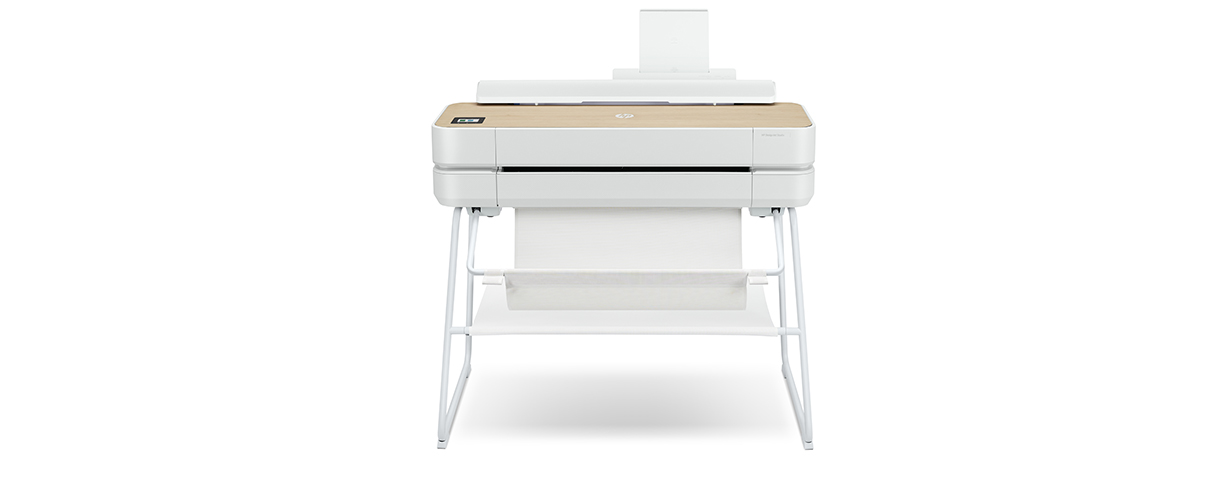
1. HP DesignJet Studio 24-in Printer
Key features:
- A conveniently compact, high-quality design
- User-friendly touchscreen interface
- Fast print speeds
Printer overview:
This inkjet printer from HP is ideal for use in many work and home environments as a convenient, compact printer. You can use it for large-format poster printing in various paper sizes. It also features an easy-to-use touchscreen interface.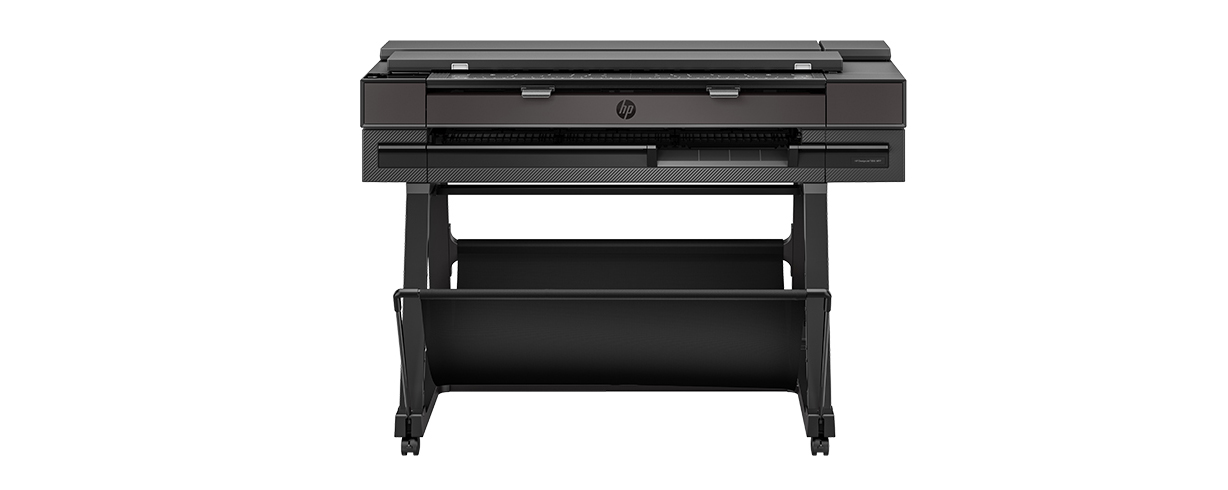
2. HP DesignJet T850 36-in Printer
Key features:
- Print multi-size prints without manually changing from roll to sheets
- Vivid colours and pigment-based ink
- Avoid distractions with fewer ink interventions thanks to 130/300 ml cartridges
Printer overview:
The HP DesignJet T850 printer makes printing in all sizes a hassle-free and effortless experience. Print half-size to D size jobs without having to manually change from roll to sheets. Get high-quality prints with vivid colours, fine-line quality, and excellent small-letter clarity to make any poster stand out. The pigment-based HP Flex Tech Inks are resistant to smudges and highlighter bleed and can withstand exposure to outdoor elements.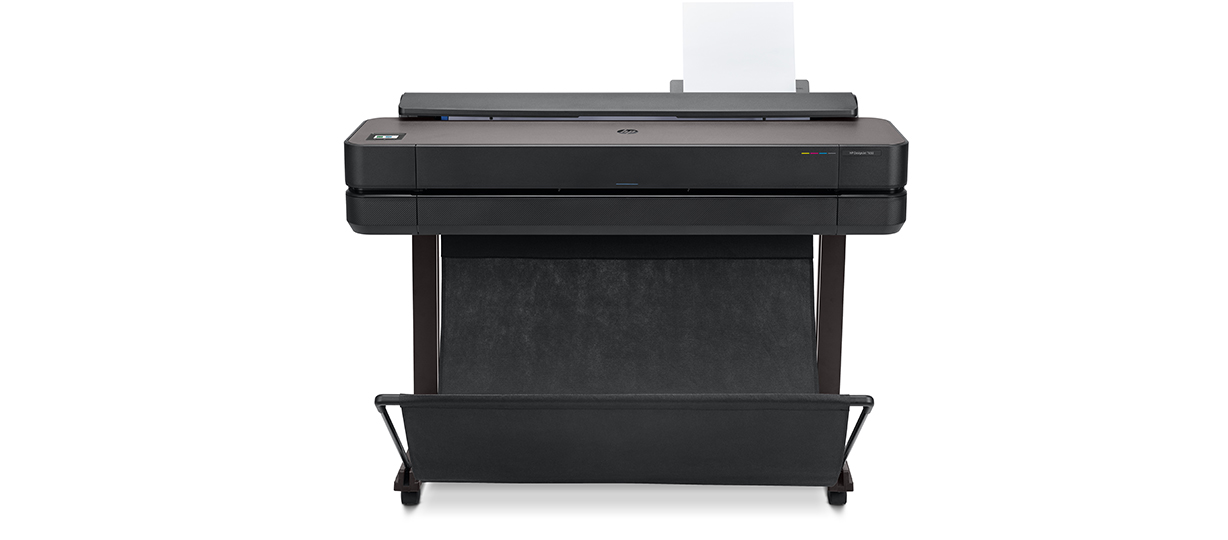
3. HP DesignJet T650 36-in Printer
Key features:
- Compatible with sheets and rolls
- Efficient print speeds
- The smallest printer with a built-in stand
Printer overview:
This 36-inch plotter prints paper sizes up to A1 and has a top print speed of 25 seconds for large documents. It uses dye inks and includes a gigabyte of memory to handle large projects. It's ideal for printing everything from posters and renders to technical drawings.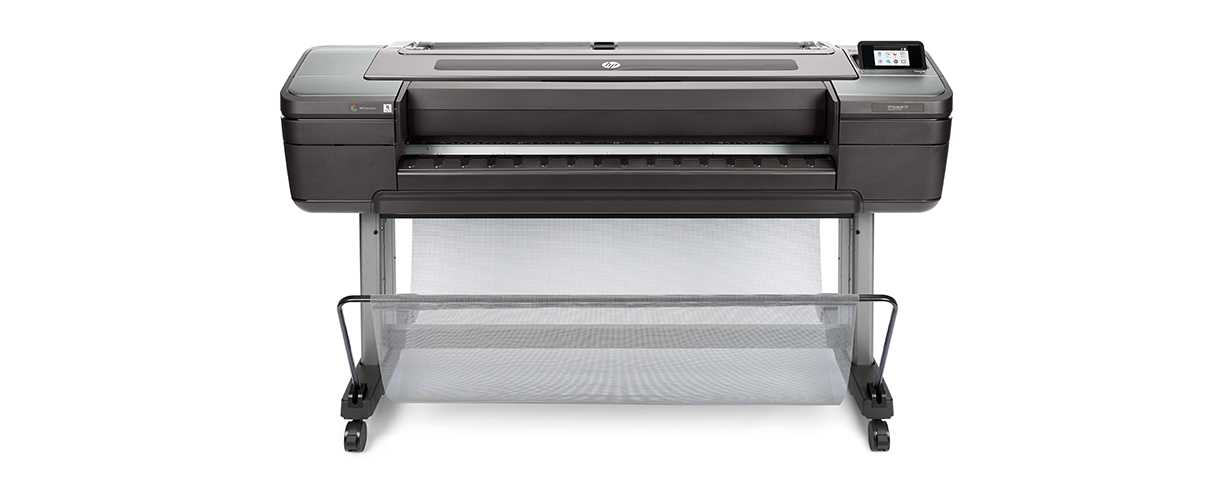
4. HP DesignJet Z9+ 44-in PostScript® Photo Printer
Key features:
- Fast printer speed
- Vibrant colours and rich detail
- Highly secure connection
Printer overview:
If you need a large printer for large-format poster printing, consider this HP DesignJet printer. This particular model can handle print jobs of up to 44 inches and includes a 500 GB hard drive and a touchscreen display. The results are sharp in detail and of superior quality.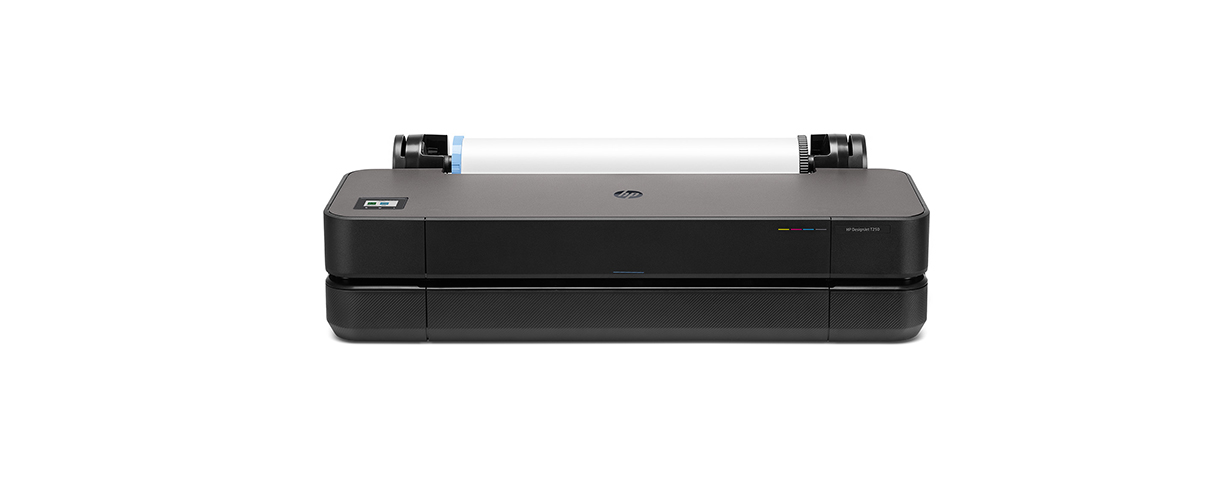
5. HP DesignJet T230 24-in Printer
Key features:
- Automatic paper switching
- Compact size
- Ease of use
Printer overview:
As the smallest large-format printers from HP, the 200 Series DesignJet models feature a compact design that makes them easy to move and meet tight space requirements. You can use it to print A1 to A4 paper sizes or a roll up to 24 inches. You can also print multiple jobs remotely via an app on your smartphone.Reach out to HP to discuss your plotter printer needs
Searching for the perfect poster printers for large-format printing? HP has you covered with a wide range of top-quality options.
-
Read more ...
Large-format printers have become an essential part of the photography industry. Many professionals today rely on these printers because they contribute to the modern photo printing process. They're also widely available and accessible, allowing photographers to easily convert digital images into high-quality, large-scale prints.
The necessity for large-format printing in the photography industry makes it crucial for photographers to purchase the right large-format photo printer to meet their unique requirements. However, with so many models on the market, it can be difficult to make the right selection based on factors like features and cost.
In this article, you'll learn about the various applications of large-format printers in the field of photography and how to find the best large-format printer for photographers. Specifically, we'll list three large-format printers that we consider to be the most reliable in this industry. Photographers can consistently produce professional-grade prints using top-performing functions with the right printer.
The Role of Large Format Printing in Photography
Large-format printing is essential for photographers because of the unique benefits it offers. It allows them to showcase their work on a grand scale, with every detail crisp and visible. The best printers for photographers are the ones that can handle the demands of large-format output without compromising on the fine details that are crucial in photographic work.
The need for high-quality prints in photography
Photographers need prints that offer the best quality through reliable, high-resolution printing processes. A large-format photo printer can print images in some of the highest achievable resolutions with accurate colours to give photographers top-quality prints with every project.How large-format printers help with achieving professional-grade prints
The best large-format printer for photographers will provide professional-grade images while eliminating the need to outsource printing. With the right investment, you can own a high-quality printer that helps you repeatedly produce superior images in larger sizes.Top factors to consider when selecting a Large Format Printer for photo printing
When looking for the best large-format photo printer, there are certain key factors to consider, such as:
a) Capacity to scale an image and print in high resolution
One of the main factors to look for in an ideal large-format photo printer is the ability for you to scale images as needed. Many large-format printers today can print sizes of around 13 inches or wider, with some capable of printing billboard-sized images. In addition to scalability, look for a printer that can print in the highest resolution to ensure consistently great image quality with each print.
b) The colour gamut and print accuracy
You should also seek a large-format photo printer that has the right colour options to accurately print each image. For example, you might want prints with a high level of accuracy when printing the colour yellow, in which case you would want a printer with a variety of reds and greens that can mix to form a range of yellows.
c) Type of ink technology used
The type of ink technology your printer uses could also factor into your decision. For instance, the best large-format printer for photographers today uses inkjet technology that provides great results and peak performance with every project.
d) Connectivity options and paper media compatibility
Your printer should also be able to connect with computers, smartphones, and other devices to allow for convenient printing within your existing tech setup. Additionally, the ideal large-format photo printer should be able to print the specific image format you want to use in photo-editing and printing software.
e) Workflow integration with common photography software
The best large-format printer for photographers will also work with your photography software to allow for seamless workflows. This software could include everything from Adobe Photoshop and Lightroom to Pixlr, Luminar, and other popular types of software.
What are the best large-format printers for photographers?
When you're searching for the best large-format photo printer for you, here are our top picks based on the options and quality they offer:
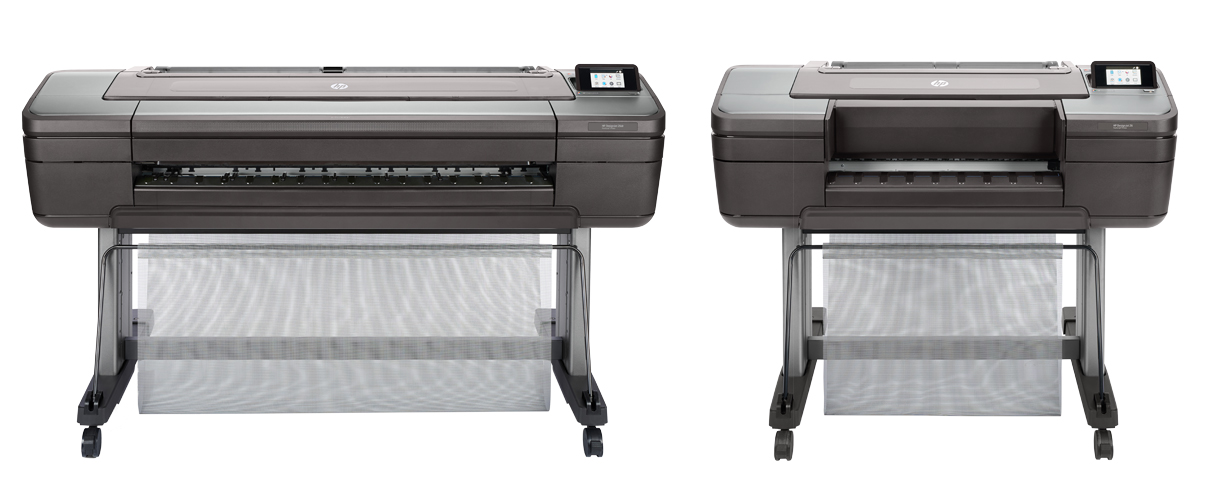
1. HP DesignJet Z Series
The HP DesignJet Z Series printers are among the most dependable HP large-format photo printers available, with multiple options in this line to give you what you need for each print job.
Key features:
- Expansive ink pigment systems of up to 9 pigments
- HP’s dual-drop technology produces a combination of large drop sizes for robust area fills at fast speeds
- Achieve smooth colour transitions with HP Pixel Control
- Large 300-ml ink cartridges
- Professional photo print quality
- Automatic roll feeds
- Touchscreen displays
- Wireless printing option available via HP Click and HP Smart app for iOS and Android
Main advantages to photographers:
Depending on your needs, you can choose from multiple printers in the Z Series that can meet your needs, each with different specs that can help you meet your specific requirements as a photographer. These printers are particularly helpful in producing top-quality professional-grade prints.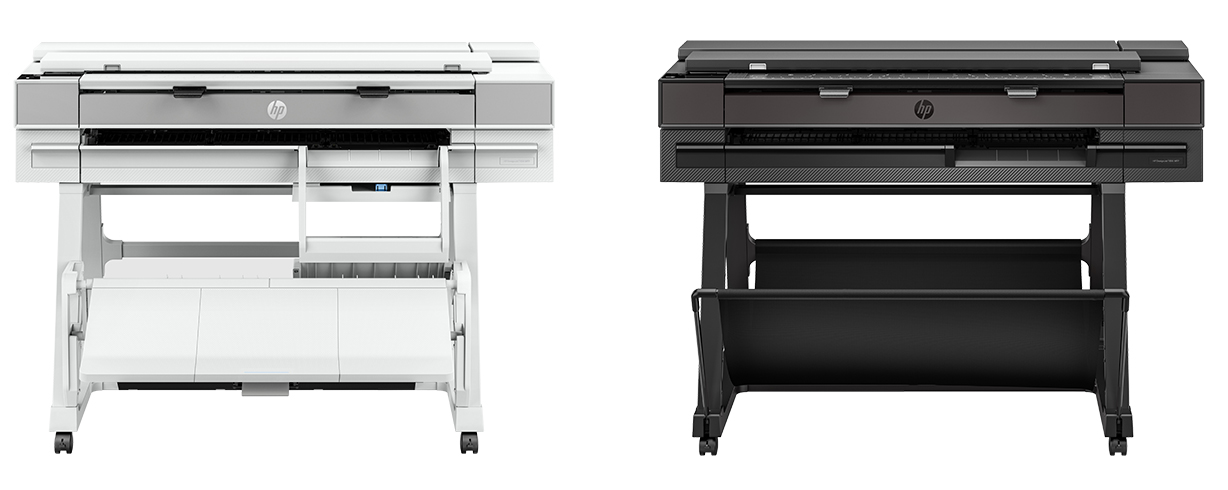
2. HP DesignJet T850/T950
Another great option on the list of the best large-format printers for photographers is the HP DesignJet T850/T950 plotter series, which offer all sorts of benefits for photographers.
Key features:
- 2,400 x 1,200 dpi for superior resolution
- Prints multi-size prints from half size to D size without having to manually change from roll to sheets
- One of the most compact plotters available in the industry
- Many printing options available, including Ethernet, Wi-Fi, USB, and HP Click
Main advantages to photographers:
This large-format photo printer is ideal for printing all types of photos with professional-level quality, along with architect and engineering drawings, and many other projects. It's easy to use and efficient, with excellent printing capabilities that make it ideal for many photography projects.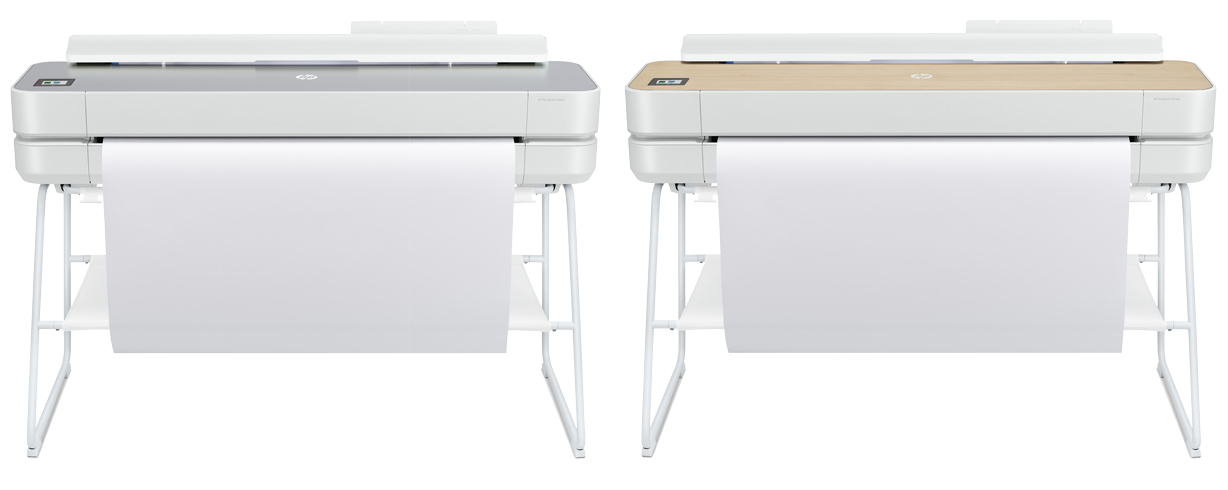
3. HP DesignJet Studio
The HP DesignJet Studio is a popular large-format photo printer that's available in either 24" or 36" models.
Key features:
- Fast print speed up to 26 sec/page on D
- 1 GB of internal memory
- First net carbon-neutral HP DesignJet plotter1
- Aesthetically pleasing wood or steel finish
Main advantages to photographers:
This plotter printer is easy to use and highly accessible, with the ability to print high-quality photos from virtually anywhere with the HP Smart app. It can also print very efficiently, depending on the level of quality of your print. Additionally, it's easy to set up and allows for simple control. That's why it features on many lists of the best large-format printer for photographers.Reach out to HP to meet your large-format photography printer needs
When you're searching for the best-large format printer for photographers, HP’s large-format photo printers can give you everything you need. When you turn to us, you'll be able to choose from a range of reliable large-format printers and plotters based on your unique printing needs.
HP offers reliable customer support and maintenance services
Not only can you find the best large-format printer for photographers with HP, but you'll also have access to top-tier customer support and maintenance as needed to keep your printer running the way it should. Regardless of the issue you might be facing, we're here to help resolve it.If you have any questions about our large-format printers or want help with finding the best model for your photography practice, then contact PSW Paper & Print today
Footnotes
1. HP is reducing the carbon footprint of printing through carbon reduction initiatives such as energy efficiency, reduced packaging, and use of recycled plastics. The HP DesignJet Studio Printer is the first HP DesignJet where HP has offset the remaining carbon impact due to raw material extraction and processing, printer manufacturing and transportation, as well as electricity, paper, and cartridge use in accordance with The CarbonNeutral Protocol https://www.carbonneutral.com/how/carbonneutral-protocol
-
Read more ...
Converting GIS data into high-quality large-format prints is critical in effectively communicating spatial information. Whether it's creating maps, posters, or visualisations, accurate and vividly aesthetic representations of GIS data are essential. They facilitate meaningful discussions about geospatial observations and patterns in the GIS and topographic industry.
This article will explore the entire process of transforming GIS data into detailed large-format prints. These documents can empower GIS professionals and topographers to use their GIS data for meaningful analysis. From preparing the data to selecting the right printer and optimising print settings, a comprehensive breakdown of each important step in the conversion process will be discussed in detail.
Why Convert GIS Data Into High-Quality Large-Format Prints?
Geographic information systems (GIS) produce data that experts use in the real world - often for large-scale projects like land development, architecture, and city planning. High-quality and large-scale prints are essential to many workflows. So being able to create them with large-scale printing is a must.
The Link Between Quality GIS Data Output, Communication, and Decision-Making
GIS documents can inform decision-makers and help coordinate teams. Sometimes, they are the reference point for multiple teams working together. The accuracy of the GIS document can determine the accuracy of both decisions and coordinated work.
Understanding GIS Data Conversion
GIS documents are created by combining hundreds to thousands of data points layered into a single document. However, printers require image file types. Therefore, data conversion in GIS becomes an essential part of the process.
Converting GIS Data Into Printable Formats
GIS data must be compressed into a printable format. But that doesn't mean you have to lose detail or accuracy. Large-scale printers typically have the internal storage to handle very large, detailed, printable files.
Common File Formats
Used in GIS Compatibility With Large Format Printers The best file types for GIS printing are vector-based. This means they are lossless when scaled. File format options include:
- PNG
- SVG
- PSD
GIS Software and Tools in Preparing Data for Print
Several software options can be used in preparing GIS data for print—some GIS-specific and some for highly detailed image editing. Be sure the software you use can handle your mass of data without loss and output accurate vector graphics.
Preparing GIS Data for Print
What to Consider When Preparing GIS Data for Large Format Prints
When preparing GIS data for large format printing, you will need to prepare clear visual images that come out in a single printable layer, even if your original design document is a multi-layered mass of data. Consider data cleanup, projection adjustment, and scale adjustments when preparing for print.
Data Cleanup
Determine the exact data to be shown and make sure that data points do not create obscure messaging in your final print.
Projection Adjustments
If there are intentional map distortions, then make sure they are consistent across the document to convey the details necessary for your project.
Scale Adjustments
Scaling GIS data for printing is a critical stage that must be done either before converting your data to a printable form or with vector graphics that scale losslessly after file conversion.
Data Simplification and Generalisation for Improved Print Quality
It may be necessary to simplify and generalise your data to make clearer prints and achieve higher print quality. Too many points will create overlapping indicators that can reduce the clarity of your documents.
Selecting the Right Large Format Printer
The right printer is essential for large-format printing of GIS data. The printer must be able to hold the full size and detail of the document and print with extreme accuracy to provide the best quality print. Large Format Printers Suitable for GIS Data Prints Not all large-format printers have the specs necessary for GIS data or the available paper sizes to meet your needs. Large-format printers must be chosen based on the largest size and highest data quality you will need to print for future projects.
Printer Specifications and Capabilities Required
Printers for GIS large-format documents must have at least 150 dpi, and 300 dpi (dots per inch) is even better. You also need printers with a great deal of internal memory that can hold the large and highly detailed files that you need to print. The ability to handle tiling may also be essential to piece together even larger-sized maps.
Selecting a Printer That Can Handle GIS Data
It is always a good idea to consult printer manufacturers like HP to identify a large format printer that has what it takes to handle the demands of your GIS data.
Optimising Print Settings on a Large Format Printer
Print Settings That Produce Optimal GIS Data Printouts
If your desired GIS map size is bigger than the paper available, you can use tiling or 'poster' settings on your printer. Leave a margin on each page or allow for overlap so you can reconstruct the tiled map with a margin for error.
The Best Print Mode, Paper Type, and Ink Settings for GIS Data Output
Each printer will have specific settings available that will help increase the quality of your GIS data prints. Set your printer to the highest dpi and use the right combination of ink and paper for highly accurate details.
Quality Control and Proofing Prior to Printing Large Format GIS Data
Top Methods for Quality Control Prior to Large Format Printing Quality control depends on:
- Clear and simplified data
- Careful scaling of the map details, key, and indicators
- Test printing
Ensuring Data Accuracy, Visual Clarity, and Overall Print Quality
Simplify your data. Focus on visual clarity, and don't hesitate to use more than one map if you need to represent multiple layers of data. Some even print on sheer drafting pages to allow layer-by-layer overlays. Optimise your markups and keys and convert the whole document into a vector file type before test printing.
The Importance of Test Prints and Proofing
Test printing ensures that your final map is up to your quality standards. Printing a single tile can help you assess if the data is conveyed clearly enough and if the notations meet your needs.
Post-Printing Considerations About GIS Data Prints
How to Maintain GIS Data Prints' Durability and Longevity
Once your GIS document is fully printed, you will likely need it for active use. Large-form GIS printings tend to require protection so they can be used throughout a project but are more difficult to protect due to their large size. You will need to make sure a one-sheet or tiled map is kept flat and protected.
How to Protect and Best Showcase Your Large Format Prints
There are several possible methods to protect your prints.
Lamination
When you have a large enough laminator, you can machine-laminate your GIS print. This will seal two thin sheets of plastic over and around your GIS document, making it safe to pass around and actively use in a busy work site.
Mounting
You can mount your GIS map onto a board, giving it the durability and mobility of rigid backing. You can even seal over the mounted document with a sheet of plastic for safekeeping.
Framing
Place your GIS document in a glass-fronted frame. This can be useful for hanging a large-format map on the wall or even turning it into a live tabletop for better collaborative planning.
Troubleshooting Issues When Converting GIS Data into Large Format Prints Common
Issues Converting GIS Data Into Print Output
GIS printing sometimes requires a little troubleshooting to ensure that the maps come out with the quality, clarity, and utility that you require. Here are a few common issues and how to solve them.
Colour Inconsistencies
The colours on your screen and the colours achieved by a printer are not always the same. A more versatile printer with a wide colour range is ideal, but you may need to calibrate your printer settings to get the best results.
Artifacts
Artifacts can be flaws in the data image created during scaling or file conversion. Scale carefully and always ensure that your data points and key/notations have been translated into a printable format correctly.
Printing Errors
Printing errors can happen. Misalignment of the image to the paper, ink spots, dry ink cartridges, and memory buffer errors can occur. This is where test prints and settings adjustments come in handy.
Solutions and Tips to Achieve the Desired Print Quality
You can get the best quality GIS large-format prints by learning your printer and exploring the printer features with the help of a professional who understands all the printer settings and how each can impact the high-detail quality of your GIS printed documents.
Reach Out to PSW to Receive GIS Map Printing Solutions our HP printer experts will be happy to help you find the best high-quality plotter printer to create your large-scale GIS maps and documents.
-
Read more ...
Sustainability is becoming a growing priority for businesses due to an increased desire for eco-conscious practices and a growing list of regulations related to businesses' environmental impact. Research shows that environmental impact will be the top business priority for businesses in the US and UK by 2025, with over 50% of companies aiming to be net zero by 2060. HP has long been an organisation that leads by example when creating sustainable printing solutions.
The development of the new DesignJet T850 and T950 printer series is our latest contribution to reducing our environmental footprint in the printing industry and helping our clients meet their sustainability goals. In this article, we'll explore the technology that enables these new printers that improved print quality while reducing the ecological impact of printing practices.
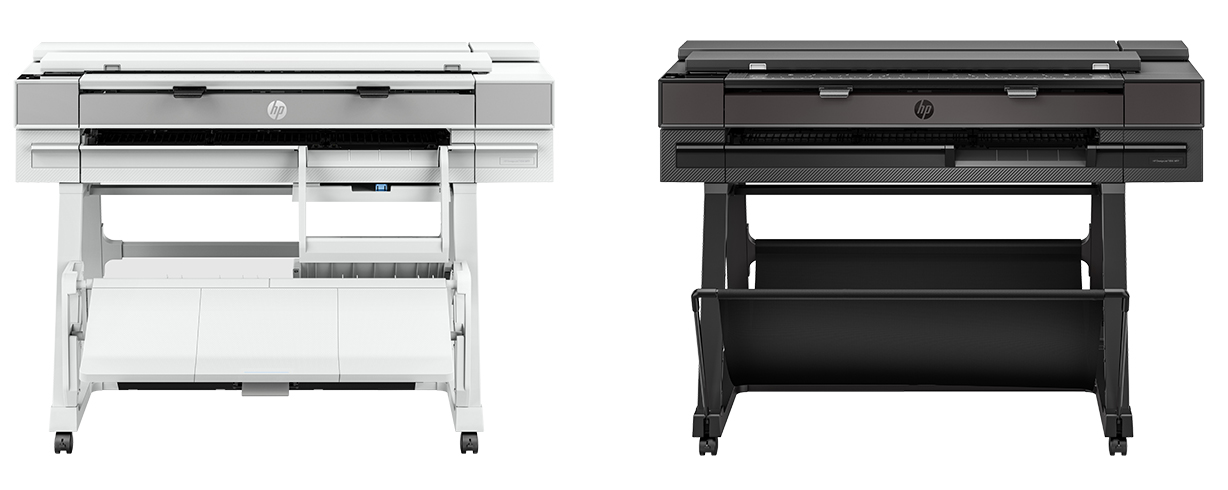
Presenting the DesignJet T850 and T950 Printers
The HP DesignJet T850 and T950 printers are designed for ease and efficiency. Each model can boost productivity and maximise agility while promoting sustainable printing practices. With an array of eco-friendly features that range from energy and ink-efficient design to the use of recycled materials, these new printer series are laying the foundation for the sustainable printing solutions of the future.
Key Sustainability Features of the New DesignJet Printer Series
The HP DesignJet T850 and T950 printers are equipped with innovative technologies that optimise ink and energy consumption and usage. AEC professionals minimise waste and reduce business costs when adopting these technologies. Some of the key sustainability features in the new DesignJet printer series include:
More Printer Energy Efficiency
Sustainable printing solutions directly address energy efficiency related to:
- The impact of the ink or toner used to print
- Cartridges
- The energy required to run the printer
Energy use during inactivity and reduced printer efficiency can result in increased energy consumption during the printing process.
Auto-schedule capabilities in the HP DesignJet T850 and T950 series enable users to reduce energy usage during idle time by scheduling printer on/off usage. Also, auto-scheduling for ink maintenance routines addresses energy consumption related to lost printer efficiency that occurs without regular maintenance.
Eco-Conscious Materials
Investing in sustainable printing solutions is a vital step in decreasing the environmental footprint of your business. The DesignJet T850 and T950 series printers are made with at least 40% recycled plastics and recyclable supplies. The compact build of these printers and high-quality materials further reduce waste by extending the time to replacement. They also decrease the overall amount of non-recyclable waste.
Reduced Environmental Impact
Alongside the many energy-efficient features, the HP DesignJet T850 and T950 series printers are built with a variety of productivity-enhancing components that can help AEC professionals reduce their overall environmental impact in the printing process.
For instance, the T850 series uses HP Flex Tech Inks that allow users to achieve high-quality CAD and renders across print sizes for fewer reprints due to low quality. The T850 and T950 series printers enable users to manage the device and print from virtually anywhere with the use of the HP App. This capability reduces the need for excess travel related to printing requirements.
Reduced Ink Usage
The cost of printer ink is one of the most prohibitive costs of using and maintaining a large format printer. Reducing ink waste with sustainable printing inks can help AEC professionals cut costs and decrease their ecological footprint. Designed for easy printing with minimal distractions, the T850 DesignJet series printers feature 130/300-mL ink cartridges that require fewer ink interventions. Larger cartridge sizes also reduce raw materials used in the production of cartridges, cost of transport, and related waste.
The T850 and T950 series printers also allow users to automate ink maintenance routines. This option reduces printer inefficiencies that result in wasted ink due to repeat printings when errors occur.
Minimal Printing Waste
Minimising your business's printing requirements is the most effective way to save energy and reduce printing waste. HP's newest printers use several features to help reduce printing waste.
- The T850 series uses HP Flex Tech inks for high-quality images that meet your needs with fewer reprints, reducing paper and ink waste.
- T850 and T950 printers allow users to avoid reprinting with print previews.
- Designed for productivity, the T950 series helps users avoid damage to finished prints with a stacker that holds up to 40 pages flat for easy collection.
Higher Cost Savings
The features of the HP DesignJet T850 and T950 series printers work together to help AEC professionals cut costs in many ways. From the features that reduce energy and ink waste to those that improve print quality, HP's new sustainable printing solutions help businesses reduce printing costs.
Efficiency and productivity features help businesses cut costs further by reducing manual tasks and saving time. For instance, T850 printers feature an integrated input tray that eliminates the need to change from roll to sheets manually. T950 printers use integrated input and output trays that keep pages sorted by size. It can seamlessly print all A3 jobs without interruptions.
What Makes HP's T850/T950 Series Sustainable?
Designed with energy conservation and reduced ink waste in mind, the T850 and T950 series have specific features that optimise sustainability.
Easier Ink Replacement and Maintenance
Sustainable printing inks reduce raw material usage, wasted ink, and general printing waste. From larger ink cartridge sizes that reduce ink interventions to automated ink maintenance routines, the T850 and T950 series improve ink efficiency with features that reduce quality issues and waste accrued from ink usage.
Optimised Usage That Saves Energy
Auto-scheduling for on/off usage is just one way the T850 and T950 series reduce energy use. Integrated input, high printing speeds, and the ability to print with fewer clicks contribute to printing efficiency. Ultimately, these printers reduce the time and energy required for printing.
Connectivity and Eco-Friendly Software Options Create Eco-Friendly Workflows
Printers designed for efficiency and high productivity help professionals develop naturally eco-friendly workflows that assist with sustainability efforts. These productivity-enhancing features help businesses reduce the environmental impact of the printing process.
Cloud Printing
The T850 and T950 printer series allow users to work securely and easily submit jobs from anywhere with protection from HP Wolf Pro Security. With the use of HP Click, AEC professionals can store data in the cloud and print from mobile devices, reducing hardware needs and creating more efficient workflows.
Mobile App Integration
hen used with the HP App, AEC professionals can reduce travel between the office and the field. Manage your device and print from virtually anywhere with the use of a mobile or tablet.
Compatibility With Industry Standard Design Software
HP wide format printers and plotters are designed to be compatible with AEC industry-standard software. As a result, businesses can confidently print various forms on different paper sizes without time-consuming setup requirements.
Reach Out to HP Today to Enquire About the DesignJet T850 and T950 Printer Series
Growing concerns about the environmental impact of construction extend far beyond building practices. Printing remains a vital element of AEC design, making sustainable printing solutions crucial for effectively reducing your environmental footprint. Reach out to PSW to learn more about how the DesignJet T850 and T950 series printers can help you meet your sustainability goals.
-
Read more ...
Against a backdrop of global economic uncertainty and fluctuating customer demand, print business leaders face a number of challenges in 2024. However, the large format printing market continues to grow at a steady rate, with technology adoption and new application innovations powering progress. We see several trends that, if approached in the right way, represent opportunities for print service providers (PSPs) to truly thrive in the year ahead.
Automating Workflows With
80% of businesses worldwide automating processes, automation is increasingly important as organisations continue to navigate macro issues such as labour shortages. Automation also boosts the speed print firms can operate at, improves the accuracy of projects, and identifies errors - enabling PSPs to find new ways to streamline operations.
As businesses run digital presses on a 24/7 basis, we expect to see a greater uptake of automated services, and the arrival of new tools to better meet PSP needs. By running businesses and print jobs through platforms like HP Print OS, print firms can unlock previously unseen efficiencies – such as through data analysis of operations, unattended printing or removing repetitive and time-consuming processes.
Whilst the impact of artificial intelligence (AI) is still emerging in the large format sector, in the medium to long term, firms that have already implemented a highly automated infrastructure will be the ones most likely to benefit from AI-influenced advances in the future, such as predictive maintenance.
Sustainability is Profitability
Research shows that 85% of PSP customers now demand sustainable products and practices. Increasing demand for more sustainable goods reflects the consumer shift in values and awareness of the planet’s health. Print firms will continue to recognise this in 2024 and embed sustainable practices where possible.
For this reason, water-based and odourless inks will be sought after, allowing print professionals to say yes to a wider range of jobs, including sensitive indoor environments. The fact more than one in five printers sold in the large format market is an HP Latex device, is proof that this trend is already well underway.
However, print firms will need to look beyond ink and also consider how substrates can be procured and disposed of in a sustainable way. Although progress has been made, the industry must continue to find alternatives to materials such as PVC by investing in new media and research to discover and elevate sustainable solutions.
Greater focus will also be placed on the energy efficiency of printers, as well as extending the lifespan of hardware through easy recycling options when a device reaches end of life. Vendors will be required to step up and support print firms in becoming more sustainable by practice - via programs like HP Planet Partners which provides recycling options for both supplies and hardware.
Print and Protect
Remote working prompted a rise in the volume and variety of malware attacks over the last four years. In an increasingly connected world, businesses will remain vulnerable. This is particularly true for small and medium sized businesses (SMBs), that have lower budgets and a lack of dedicated IT support. Research shows nearly half of SMBs have experienced a cyber security incident within the past year, while over two thirds don’t consider security until after an incident.
As the web of connected devices in office spaces become more sophisticated, and with the advent of AI, the cyber security landscape will become even more complex in 2024.
There is an opportunity to redesign and rebuild a digital ecosystem of tools that help businesses securely manage their end-point devices and data. Printers are often a forgotten endpoint, giving hackers a way into a network. However, with more security-conscious solutions on the market, like HP’s Wolf Security-enabled DesignJet range, SMBs will begin to turn the tide on cyber criminals.
Personalisation and Co-created Content
In an increasingly commoditised world, PSPs will stand out and win business in 2024 with customisable offerings. Brands are seeking ways to differentiate themselves from competitors, while end consumers have shown appetite for personalised or ‘limited edition’ products and experiences. According to research by Sparks & Honey, the expected value of the personalised items market will reach $201bn by 2026, up 49% from 2021. Meanwhile, 70% of shoppers are willing to pay at least 10% more for customised or unique products.
We are seeing creative platforms such as Canva increasing end users’ design capabilities, giving them more ways to personalise print products such as wallpaper. HP recently released a trends report which highlights that the digitally printed wallpaper market is predicted to grow at an annual rate of 23.6% until 2025, reaching a total value of $10.4 billion.
Brands will increasingly base their marketing strategies around ‘user-generated’ or ‘co-created’ content - campaigns that tell the stories of their customers and speak directly to them. According to marketing analytics firm WARC, such approaches have become the number one most effective way to reach Gen Z and millennial audiences.
With the right technology, print firms will be the enablers of this growing trend, and become trusted partners for brands. At a hardware level, firms will need digital print technology capable of handling a range of specifications, delivering short runs, and accommodating fast turnarounds. However, the ecosystem around the device will become even more key in 2024, ranging from the software firms are embedding to manage operations, to ensuring staff are upskilled to harness the latest tools coming to market.
Transforming Our World by Design in 2024
Print businesses have been evolving year on year, and turbulence in recent years has only accelerated the pace of change. Large format print providers are displaying resilience and creativity, and the industry will continue to thrive this year in a more connected, automated, sustainable and secure environment.
About HP
HP Inc. is a global technology leader and creator of solutions that enable people to bring their ideas to life and connect to the things that matter most. Operating in more than 170 countries, HP delivers a wide range of innovative and sustainable devices, services and subscriptions for personal computing, printing, 3D printing, hybrid work, gaming, and more.
-
Read more ...
Today HP announced a new 36-inch DesignJet portfolio that simplifies the printing needs of AEC (architecture, engineering & construction) professionals who increasingly work in a hybrid environment - needing a high-quality printing experience, whenever and wherever they are.
The devices will also enable copy shops to better meet the requirements of AEC customers.
With 54% of AEC firms deploying a hybrid work policy, flexible working models are here to stay. This new approach has changed workflows, requiring aspects of the job, including large format printing, to be enabled in a hybrid environment.
Because of this, users need intuitive print technology that meets their technical needs, whether that is printing A3-A1 CAD drawings or architectural boards, all without compromising on security.
“More than ever, AEC pros, or the copy shops that serve them, need easy-to-use tools that help them be more productive and deliver high-quality work - whether they are in the office, at home or somewhere remote,” said Daniel Martinez, General Manager, Large Format Business, HP. “With our new HP DesignJet lineup - alongside software such as HP Click and the HP app - users can print, monitor jobs and check device status from virtually anywhere, as well as collaborate on documents with colleagues.”
With the new 36-inch DesignJet portfolio, HP helps customers to go beyond and run their businesses while achieving their sustainability goals.
Thanks to HP’s Forest First initiative, with every page a user prints with the HP DesignJet T850/T950 or the HP DesignJet XL 3800, HP collaborates with non-profit organisations , to ensure forests are restored.
The HP DesignJet T850/T950 are both made from at least from 35% recycled plastic, use cardboard-based cartridges, and can be scheduled to power on and off automatically to preserve energy consumption. Meanwhile the HP DesignJet XL 3800 is comprised of at least 33% recycled content.
HP has also prioritised cyber-security, with HP Wolf Security protection built into the HP DesignJet T850/T950 and XL 3800. HP Wolf Security provides comprehensive endpoint protection and resiliency that starts at the hardware level and extends across cloud-based software and services – safeguarding an organization’s PCs, printers and people from cyber predators.
With additional Enterprise-level Wolf security features, the HP DesignJet XL 3800 is also the world’s most secure large format printer, based on third-party analysis of security features available on the market.
Solutions For All AEC Requirements
The new HP DesignJet lineup – consisting of three product families - provides several options and features to cater for all AEC user needs, including:

HP DesignJet T850/T950
- Save time by moving effortlessly from A3 to A1 prints, with the A3-to-Large Format integrated device
- High-quality CAD and renders on any size and application
- Simplify remote collaboration with one-click scan and copy workflows from the front panel
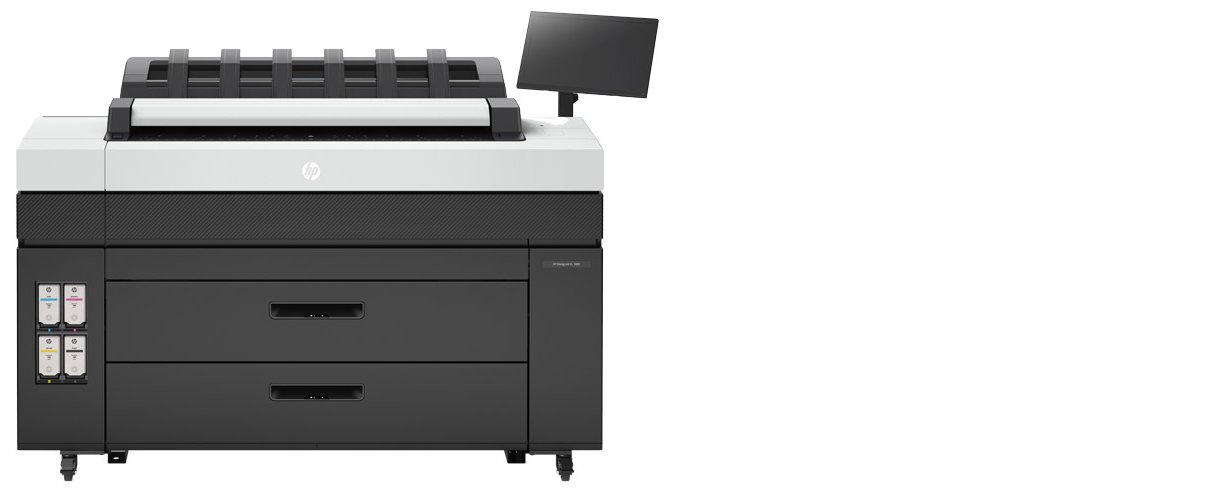
HP DesignJet XL 3800
Keep projects moving with the fastest colour printer in its class at 6 A1/D colour pages/min, and first page out in 20 seconds
- Excellent CAD lines and graphics applications in mono and colour
- Optimise space with 20% more compactness
- Perfect for copy shops and enterprises
Availability
The HP DesignJet T850/950 and the HP DesignJet XL 3800 are expected to be commercially available in all major markets starting October 17th and October 30th, respectively.
About HP
HP Inc. is a global technology leader and creator of solutions that enable people to bring their ideas to life and connect to the things that matter most.
Operating in more than 170 countries, HP delivers a wide range of innovative and sustainable devices, services and subscriptions for personal computing, printing, 3D printing, hybrid work, gaming, and more.
-
Read more ...
Today HP Inc. launched the new HP Latex 630 printer series, completing HP’s Latex range and making white ink technology available to Print Service Providers (PSPs) of all sizes. White ink allows users to produce a more impactful range of signage and décor jobs with stunning image quality and colours that jump off the page, creating attention grabbing campaigns for end-customers.
The HP Latex 630-series, as with the rest of HP’s Latex portfolio, allows firms to offer more sustainable printing services: with water-based latex inks that give off negligible chemicals or odours; UL ECOLOGO® and EPEAT® environmental certifications; and carton-based cartridges that reduce plastic by using 100% recycled and recyclable cardboard containers, as well as recycled plastics from HP’s closed-loop process - including post-consumer beverage bottles.
“The new HP Latex 630-series packs our leading latex features, such as white ink, into a more compact and affordable form factor - allowing even the smallest of print businesses to effortlessly deliver high impact signage and décor applications, boosting margins,” commented Daniel Martinez, General Manager, HP Large Format. “Beyond the hardware, we have continued to innovate when it comes to services and solutions, with new cloud-based HP Print OS functionalities giving time-pressed users the ability to process and monitor jobs from virtually anywhere.”
The HP Latex 630 family provides a number of options and features, including:
- A choice of four SKUs
- The HP Latex 630 and HP Latex 630 W – the latter with white ink functionality
- HP Latex 630 and 630 W Print & Cut Plus – giving customers the option of upgrading to a dual-device solution, with print and cut functionality
- Save time – with automated front-loading system and simple, fast load/unload workflows
- Easy re-prints – with in-printer storage of up to 10GB
- Stunning image quality – with HP Pixel Control Technology and new printhead architecture for sharper small text, all at standard speeds of 14m2 (150ft2) an hour
- Software as standard – SAi RIP solution offered out of the box
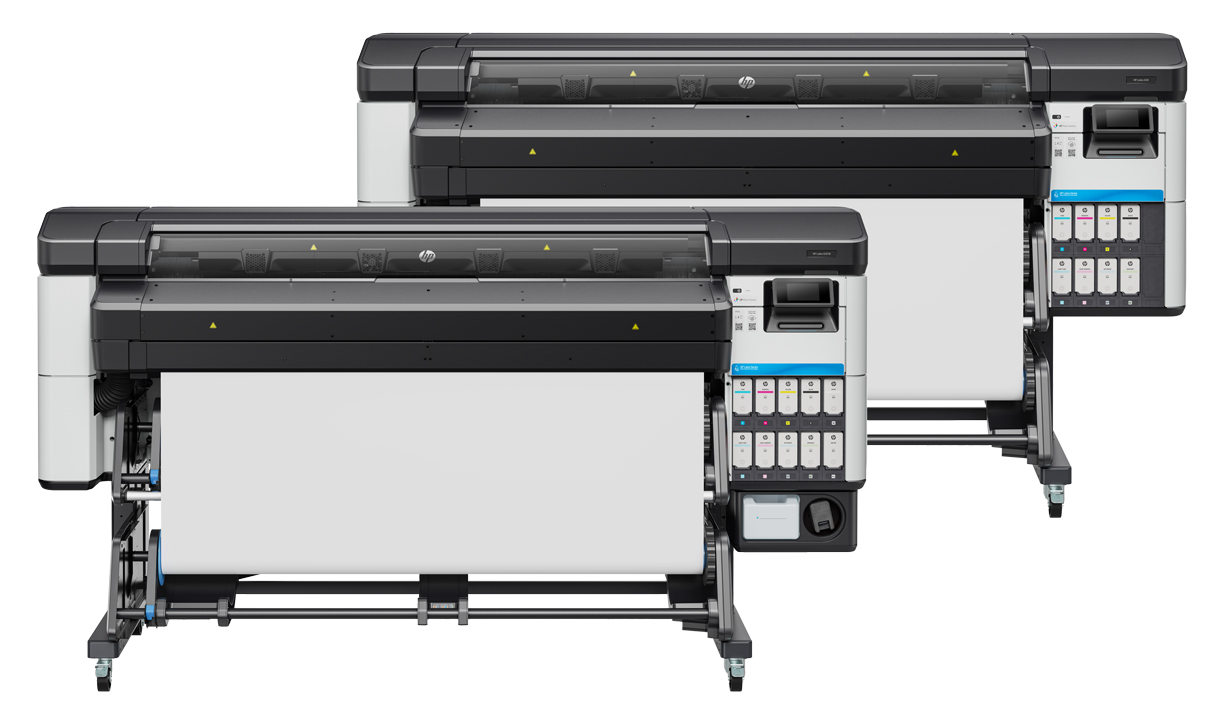
Win business online and simplify operations
As part of a continued focus on helping PSPs improve productivity and grow their business, HP has also announced HP PrintOS Design & eCommerce – an intuitive web-to-print solution that saves valuable time with simplified print application design capabilities, efficient production paths, and step-by-step guidance on how PSPs can integrate it with an existing e-commerce store.
"We spend a lot of time listening to print providers about what they need to grow, and one key area was evolving their e-commerce capabilities and better connecting the front and back-ends of their business," added Daniel Martinez. “HP Print OS Design & eCommerce is our response, giving PSPs a quick and easy way to enhance their online shop, as well as new ways to process orders and automate jobs.”
The Design & eCommerce solution will be made available in select countries within HP’s PrintOS suite to subscribers of the HP Professional Print Service Plan (PPSP) ‘Plus’ tier, making the PPSP offering more appealing to small and medium sized PSPs. HP’s Professional Print Service Plans are designed to enable business agility, maximize uptime, and to provide learning opportunities and support.
For further information about HP Print OS Design & eCommerce and HP Professional Print Service Plans, please contact PSW Paper & Print Limited.
Availability
The HP Latex 630, HP Latex 630 W, HP Latex 630 Print & Cut Plus, and HP Latex 630 W Print & Cut Plus are expected to be available from September 19th, 2023, in major markets globally.
The HP Print OS Design & eCommerce solution is expected to be available from November in the UK, Spain, Australia and New Zealand. For further information, please contact PSW Paper & Print Limited.
About HP
HP Inc. (NYSE: HPQ) is a global technology leader and creator of solutions that enable people to bring their ideas to life and connect to the things that matter most. Operating in more than 170 countries, HP delivers a wide range of innovative and sustainable devices, services and subscriptions for personal computing, printing, 3D printing, hybrid work, gaming, and more. For more information, please visit: http://www.hp.com.
- A choice of four SKUs
Skip to Content
- Create an Account
- Offers for you

+44 (0) 1527 853 136





